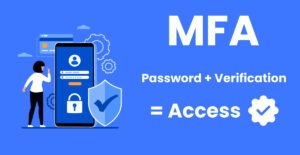
When an employee leaves your small business, whether by choice or due to circumstances, it’s essential to manage the employee offboarding process carefully—especially when it comes to network security. A well-planned employee offboarding process can protect your business from security threats, data loss, and unauthorized access. Here’s a guide to the key steps you should take to ensure your business remains secure during the offboarding process.
1. Start the Employee Offboarding Process Early
As soon as you know an employee is leaving, it’s important to start the offboarding process. Doing this early gives you the time to properly secure your network and manage any company data they had access to.
- Notify Key Personnel: Inform your IT person or whoever manages your business’s technology as soon as possible. This allows them to start securing access to important systems and data.
- Review Access Levels: Make a list of all the systems, applications, and networks the employee had access to. Understanding their access helps ensure nothing is overlooked.
2. Immediately Revoke Access to Systems and Networks
One of the most important steps in protecting your business’s network is quickly revoking the departing employee’s access to all company systems.
- Disable User Accounts: Shut down all accounts that the employee used. This includes email, cloud storage, customer management systems, and any other software your business relies on.
- Change Shared Passwords: If the employee had access to shared accounts or passwords, change them immediately. This prevents any future access.
- Remove Remote Access: If the employee had the ability to access your systems remotely, such as through a VPN, make sure to cut off that access right away.
- Email Forwarding: If necessary forward the offboarded employee’s email to the appropriate personnel.
3. Collect Company-Owned Devices and Equipment
Retrieving all company-owned devices and equipment is crucial for maintaining control over your business’s data.
- Get Back Devices: Ensure the employee returns all company devices, such as laptops, phones, tablets, or external hard drives. This prevents them from taking sensitive information with them.
- Check Devices for Company Data: Before you reuse or wipe these devices, check to make sure no important company data is still on them. Move any necessary files to a secure location and delete any unnecessary data.
4. Secure Your Data and Intellectual Property As a Part of the Employee Offboarding process
Safeguarding your business’s data and intellectual property during the employee offboarding process is essential to prevent leaks or theft.
- Backup Important Files: Ensure all critical files and documents the employee worked on are backed up. This could include emails, project files, and any other important data.
- Monitor Data Transfers: Keep an eye out for any unusual data transfers, especially large file movements or attempts to send information to personal accounts. This can help prevent data theft.
5. Conduct a Security-Focused Exit Interview
An exit interview isn’t just about gathering feedback; it’s also an opportunity to address security concerns.
- Reinforce Confidentiality: Remind the employee of any confidentiality agreements they signed. This helps protect your business’s sensitive information even after they leave.
- Ask About Security Issues: Ask the employee if they are aware of any security vulnerabilities or issues within your business. Their insights could help you improve your security measures.
6. Update Internal Records and Security Policies
After an employee leaves, it’s important to update your internal records and review your security policies.
- Update Access Records: During employee offboarding remove the employee from any lists of authorized users. This includes updating contact lists and access control documentation.
- Review Security Policies: Take this time to review and update your security policies. Ensure they reflect any changes needed based on the offboarding experience.
7. Communicate the Departure to Your Team and Clients
Clear communication with your team and clients helps ensure a smooth transition and maintains trust.
- Inform Your Team: Let your team know about the employee’s departure in a professional manner. Make sure they understand any changes to roles or responsibilities.
- Reassure Your Clients: If the employee worked with clients, inform them of the departure and reassure them that their data and projects are secure and will continue to be managed effectively.
8. Monitor Network Activity After the Employee Offboarding
Even after the employee has left, continue monitoring your network for any unusual activity.
- Use Network Monitoring Tools: Implement tools to keep an eye on any unauthorized access attempts. Look out for unusual login attempts or access to sensitive files.
- Conduct a Security Audit: Consider performing a security audit after the employee’s departure. This can help identify any remaining vulnerabilities and ensure your business’s network is secure.
9. Legal and Compliance Considerations
It’s important to ensure that your offboarding process complies with legal requirements, especially concerning data security and employee privacy.
- Follow Data Protection Laws: Make sure you handle the departing employee’s personal data in compliance with relevant laws, such as GDPR or CCPA, if applicable to your business.
- Document the Process: Keep records of all steps taken during the offboarding process. This can protect your business in case of any future disputes or security incidents.
10. Review and Improve Your Employee Offboarding Process
Regularly review your offboarding process to ensure it’s effective and up to date.
- Collect Feedback: Ask your team for feedback on the offboarding process. Use this feedback to identify any areas that need improvement.
- Update Procedures: Make updates to your offboarding procedures as needed to strengthen your business’s security.
Conclusion
For small businesses, securing your network during the employee offboarding process is critical. By following these steps, you can reduce the risk of data breaches, unauthorized access, and other security threats. Regularly reviewing and updating your offboarding procedures will help ensure your business remains secure as it grows and evolves.
Baychester can assist you with maintaining a strong network security profile. Please contact us!


